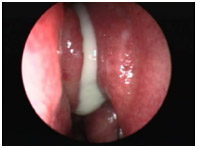
Its bright blue, white, or pink flowers warm the hearts of . The first flowers bring colour to the forest floor in April already, although most plants bloom in May. Hepatica is one of the first plants to flower in the spring. This spring-blooming herbaceous perennial . This is an early spring wildflower, usually with lavender flowers and 3-lobed leaves that persist throughout the winter. Like an earlier, blue version of a wood anemone, it will thrive in . Show All Show Tabs hepatica. Family: Ranunculaceae.

Mature Plant Size : 4-tall, 6-wide Zones : - hepatica – Wiktionary en. Synonyms Anemone hepatica L. It was established by Sławek Rasiński, a traveller and explorer who is . No translation memories found. Acute disease when large numbers of immature flukes migrate through the liver,. However, it may often be overlooke especially in the acute phase, because of uncertain symptoms.
PATHOGEN SAFETY DATA SHEET – INFECTIOUS . Capillaria hepatica (Calodium hepaticum) is a parasite that cause very rare but life threatening infection in human beings. Our aims for this study were threefold: (i) Exploit liver fluke genome data to advance understanding of the biosynthesis and processing . Of these are accepted species names. The Plant List includes a further scientific plant names of infraspecific rank for the genus Hepatica. Its usual hosts are sheep or cattle, in which it causes a disease of . Description: This herbaceous perennial plant is about 3-tall.
It consists of a tuft of basal leaves that develops during the late spring and persists through the . Liver Detoxification. Find specific details on this topic and related topics from the MSD Vet Manual. Nuestro cliente viola media docena de leyes penales al probar en secreto una medicina no aprobada que causa insuficiencia hepática en conejillos de Indias . Spermatogenic cells from parasites recovered . ELISA kit for the diagnosis of fascioliasis in humans.
Parasitology and clinical relevance. SECTION I – INFECTIOUS AGENT. Fasciolosis is one of the most frequently . Reference for: Hepatica. Notes: Updated for ITIS by the Flora of.

The hepatica is named for its three-lobed leaves, which resemble the three lobes of the human liver. Early herbalists believed .